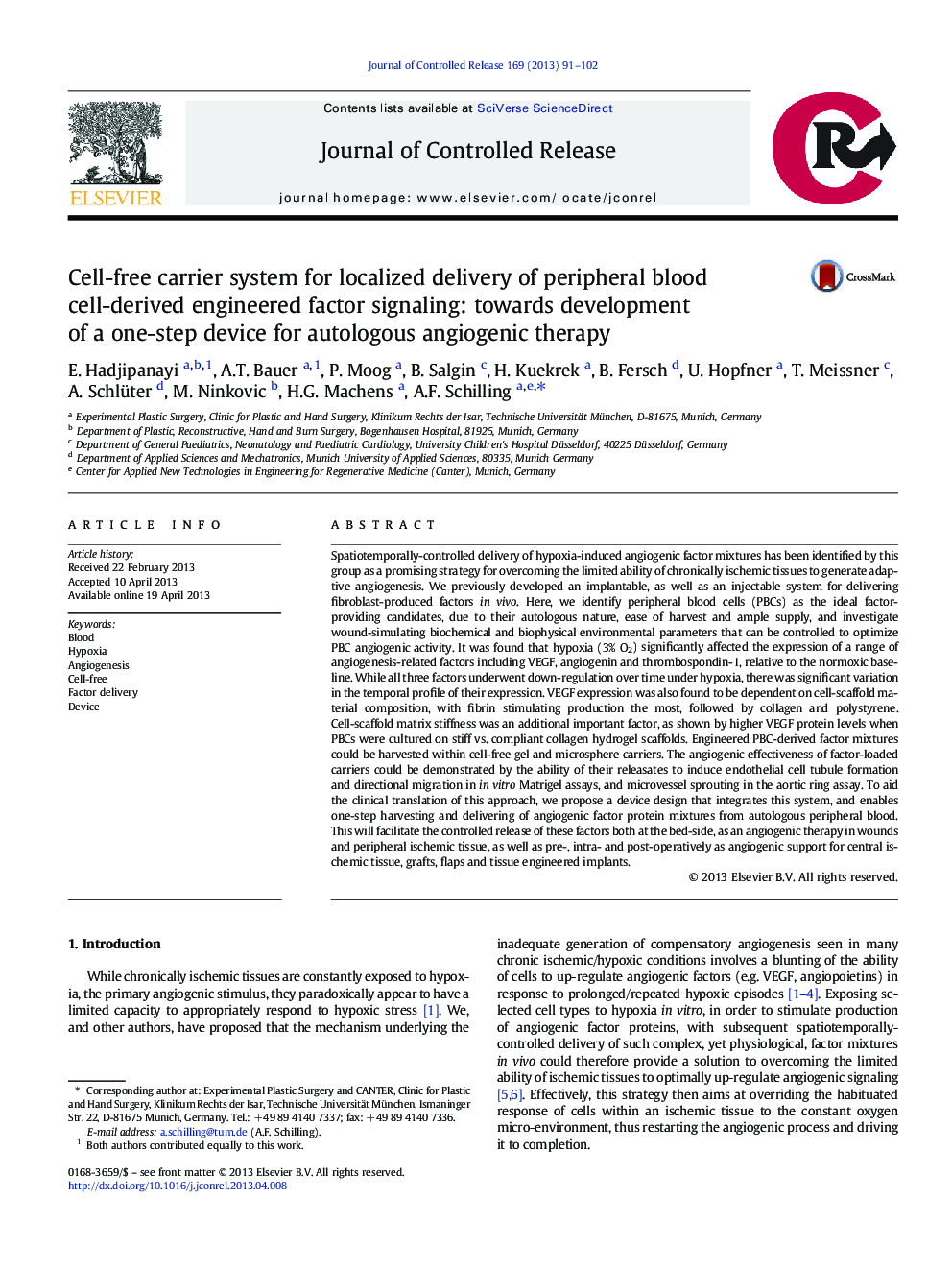| Article ID | Journal | Published Year | Pages | File Type |
|---|---|---|---|---|
| 1424188 | Journal of Controlled Release | 2013 | 12 Pages |
Spatiotemporally-controlled delivery of hypoxia-induced angiogenic factor mixtures has been identified by this group as a promising strategy for overcoming the limited ability of chronically ischemic tissues to generate adaptive angiogenesis. We previously developed an implantable, as well as an injectable system for delivering fibroblast-produced factors in vivo. Here, we identify peripheral blood cells (PBCs) as the ideal factor-providing candidates, due to their autologous nature, ease of harvest and ample supply, and investigate wound-simulating biochemical and biophysical environmental parameters that can be controlled to optimize PBC angiogenic activity. It was found that hypoxia (3% O2) significantly affected the expression of a range of angiogenesis-related factors including VEGF, angiogenin and thrombospondin-1, relative to the normoxic baseline. While all three factors underwent down-regulation over time under hypoxia, there was significant variation in the temporal profile of their expression. VEGF expression was also found to be dependent on cell-scaffold material composition, with fibrin stimulating production the most, followed by collagen and polystyrene. Cell-scaffold matrix stiffness was an additional important factor, as shown by higher VEGF protein levels when PBCs were cultured on stiff vs. compliant collagen hydrogel scaffolds. Engineered PBC-derived factor mixtures could be harvested within cell-free gel and microsphere carriers. The angiogenic effectiveness of factor-loaded carriers could be demonstrated by the ability of their releasates to induce endothelial cell tubule formation and directional migration in in vitro Matrigel assays, and microvessel sprouting in the aortic ring assay. To aid the clinical translation of this approach, we propose a device design that integrates this system, and enables one-step harvesting and delivering of angiogenic factor protein mixtures from autologous peripheral blood. This will facilitate the controlled release of these factors both at the bed-side, as an angiogenic therapy in wounds and peripheral ischemic tissue, as well as pre-, intra- and post-operatively as angiogenic support for central ischemic tissue, grafts, flaps and tissue engineered implants.
Graphical abstractDevice design for one-step harvesting and delivering cell-free angiogenic factor protein mixtures from autologous peripheral blood. The process of blood collection, hypoxic cell culture and factor harvest/delivery can be achieved through the same closed unit, under fully sterile conditions.Figure optionsDownload full-size imageDownload high-quality image (56 K)Download as PowerPoint slide
